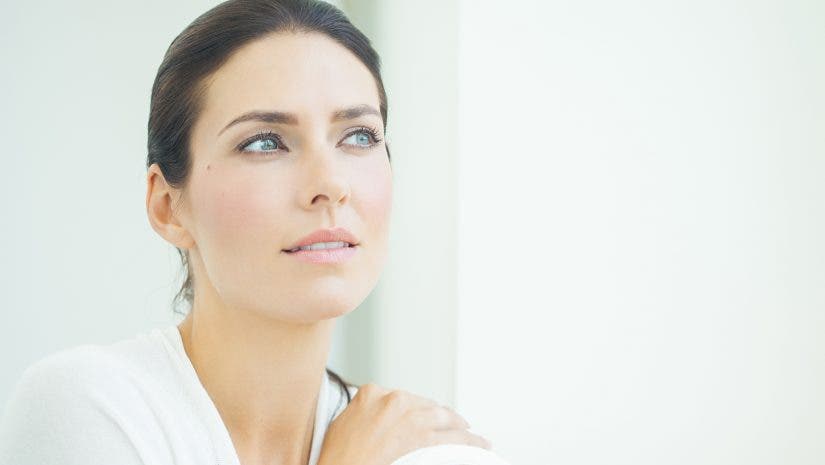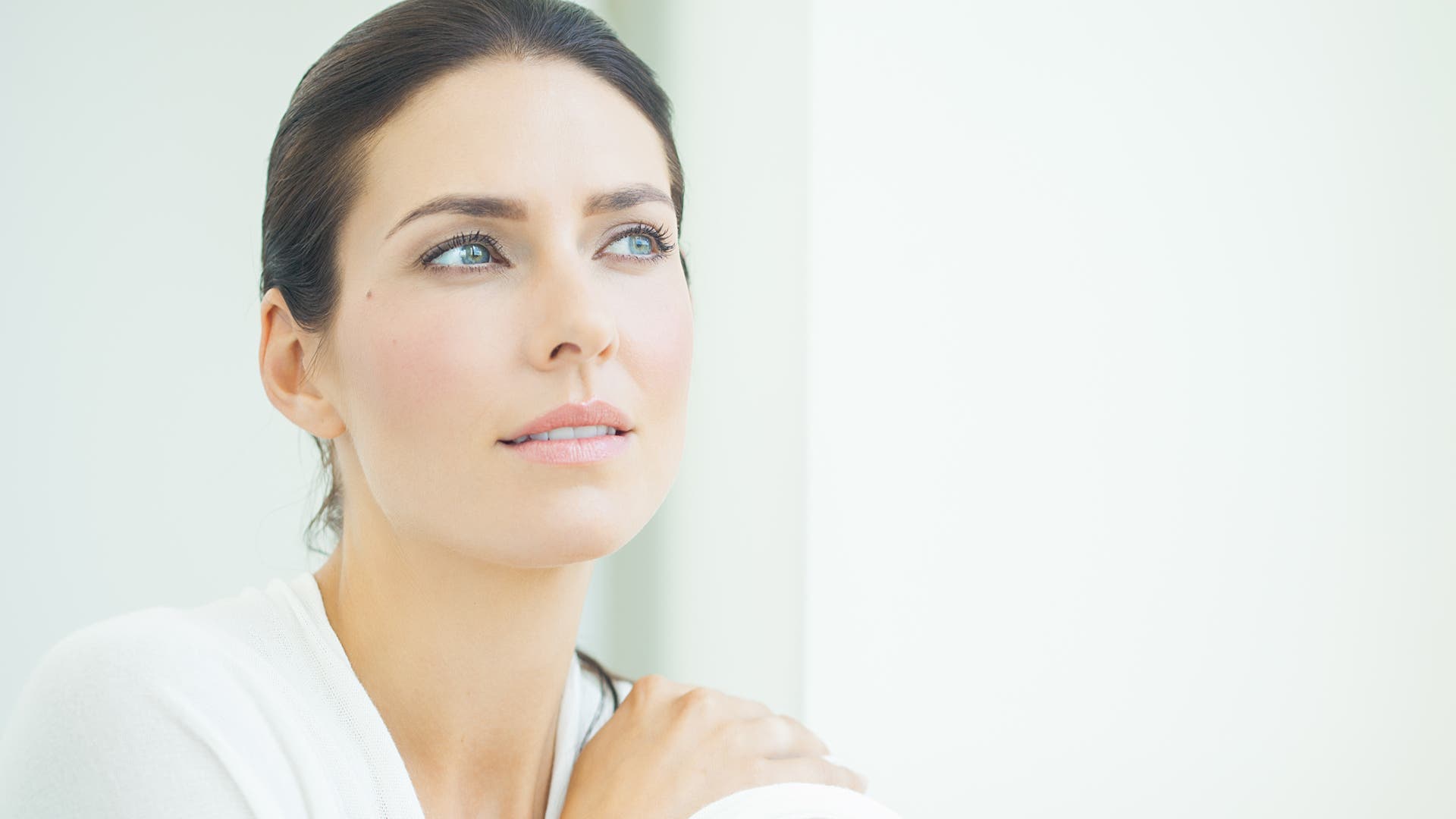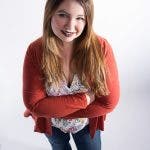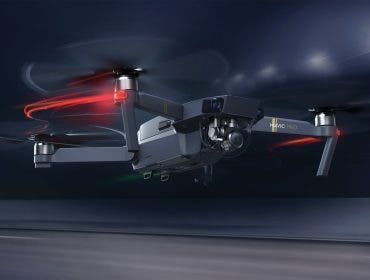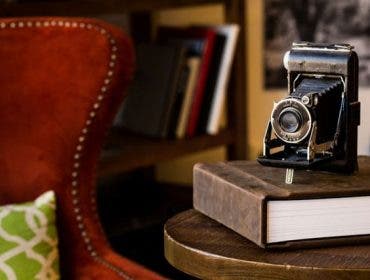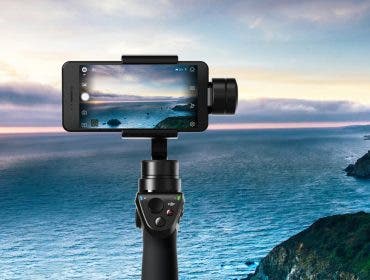Depending on lighting, portraits can run a gamut of fun, bright, light, airy and upbeat to dark, moody, serious, mysterious and dramatic. This is why studio lighting can be intensely difficult for some and fun for others. How you light a portrait can make or break the image, so it’s important not only to do it, but to do it well. In this article, we’re going to break down the difference between high key lighting and low key lighting.
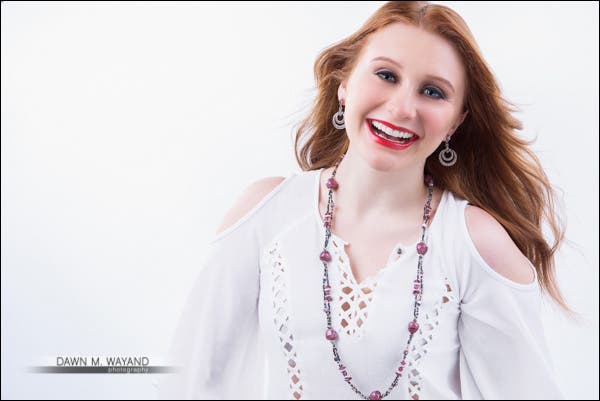
High-key image of my model, Kathryn – extremely soft shadow transition,
light-color clothing and a strong black point using two background lights.
What is High Key Lighting and How to Use It?
High-key is a lighting style that results in little-to-no shadow on your subject, based on the level of brightness of your lights hitting a subject. High-key is based on lighting ratios. It’s not a lighting pattern – which is based on light direction.
Many lighting patterns can work for high key lighting so long as there are minimal to no shadows. High-key lighting can be achieved when your fill light(s) project(s) the same level of brightness as your key light to fill in shadows. This creates a 1:1 ratio eliminating all shadows. We’ll discuss high-key more in-depth in just a moment, but for now, let’s jump into lighting ratios to get a better understanding of high-key lighting later.
What are Lighting Ratios?
Before we move into key lighting, it’s important to understand how to achieve high-key and low-key lighting, which involves knowing and understanding a little bit about lighting ratios. I go into great detail on lighting ratios in my article: Understanding and using lighting ratios in studio portraiture. I encourage you to take a look at that article to get a better understanding of the math and tools behind some impressive lighting techniques.

Simple Table of Lighting Ratios.
Lighting ratios are basically the mathematical ratio relation of light that falls onto a subject between two light sources, typically a key light on the highlight side and fill light on what would be the shadow side.
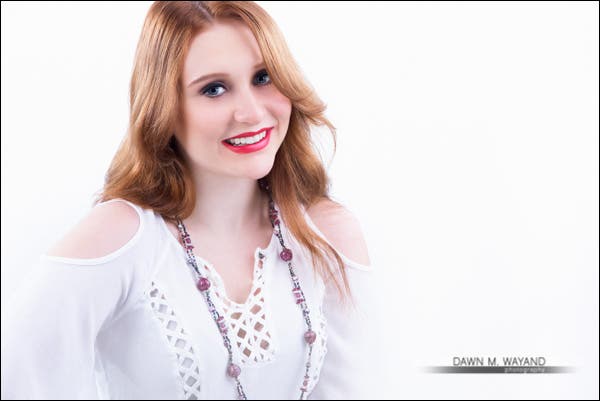
Another high-key portrait example.
High Key Lighting
High key lighting is a lighting style that results in low contrast and soft shadow transition through the use of a lot of soft, diffused light. Sometimes photographers slightly overexpose an image as an artistic choice with this type of lighting, but do not confuse high-key lighting and a just plain ole’ blown out image. A light, bright and airy image of a subject containing a true black point (such as the pupil of an eye or a subject’s eyebrows or eyelashes) or some form of contrast is often a good mark for the image to be high-key whereas an overexposed image will not show a true black at all.
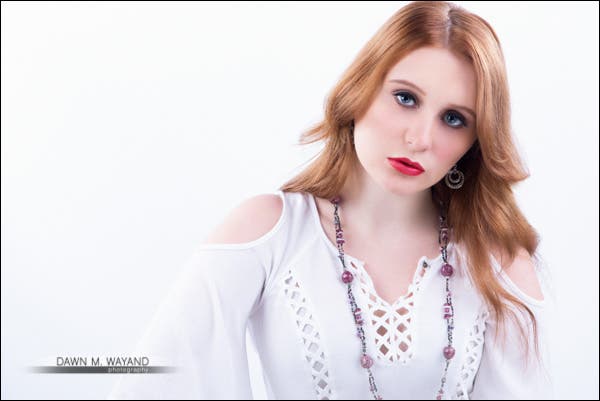
Another example of a high-key portrait.
Fashion and beauty photographers often use this technique because the extreme amount of soft light and lack of shadows flatter a subject’s features. Pores and wrinkles are eliminated by this form of beauty lighting.
Capturing a High-Key Image
High-key lighting is generally achieved by having a key light and a fill light, opposite each other, with the key light set twice as bright as the fill light. In addition, you will want to have two lights set at 45 degree angles illuminating the background. I have also found that one background light hitting the background directly behind the subject to also work well in this type of lighting style.
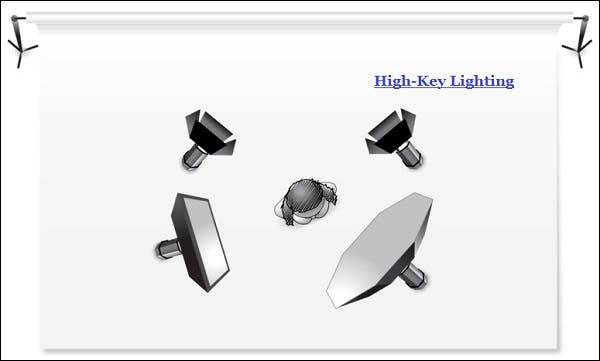
One high-key lighting style that involves a key light, a fill light and two lights serving as background lights.
The subject of the image would typically be wearing lighter colors – in most instances, white – to lend to the portrayal of a pure, happy, upbeat, light and airy image, such as in the image below.
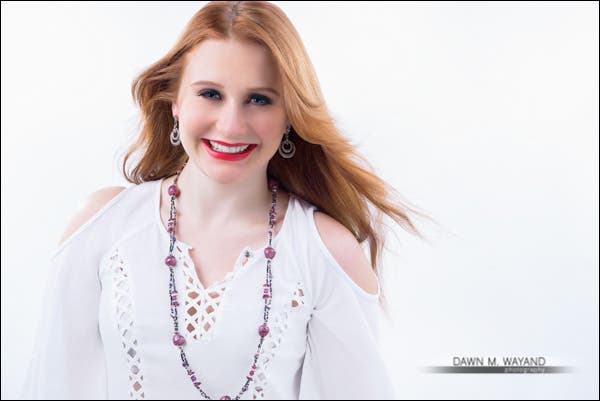
An example of high-key lighting using two background lights.
Below is an alternate setup used to yield a similar result.
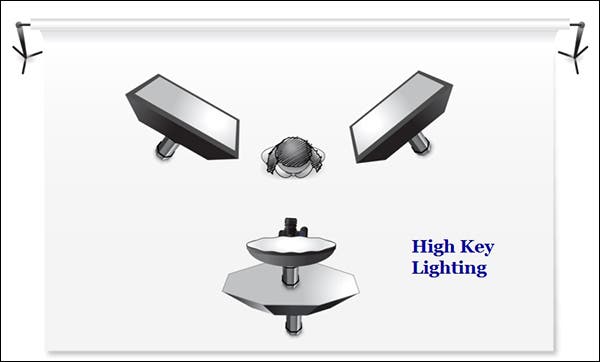
An alternate high key lighting setup.
The setup above yielded this image of me below…
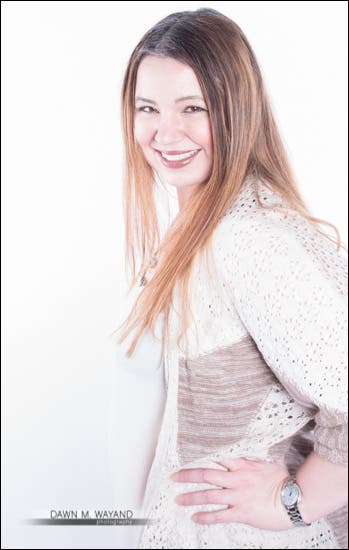
High key with an intentional slight overexposure for artistic effect.
Image of me courtesy of Yann Bizeul
High Key Lighting vs Overexposure
Sometimes photographers slightly overexpose an image as an artistic choice, but do not confuse high-key lighting and a just plain ole’ blown out image. A light, bright and airy image of a subject containing a true black point (such as the pupil of an eye or a subject’s eyebrows or eyelashes) or some form of contrast is often a good mark for the image to be high-key whereas an overexposed image will not show a true black at all.
What is Low Key Lighting and How to Use It
“Low key” lighting is a more dramatic form of lighting that focuses on form and shadow. It is typically a darker image where the focus can be on part of your subject whether it’s their face, a body part or a certain amount of their whole body. It can be much more interesting when adding a little bit of rim lighting behind your subject.
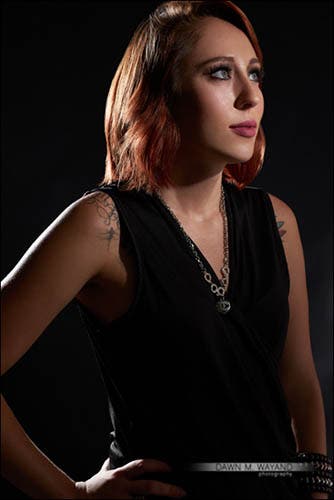
Low-Key profile shot.
You’ll find low key lighting used a lot in television and movies to relate the feeling of mystery and darkness of characters.
For low key lighting, you’ll want a dark background to start. I generally like to simplify and use black or gray seamless paper, though those shades will also work well in muslin and other background choices too. I like to use two light sources for my low-key lit portraits: one for my key light for use on my subject’s face and one for a rim light behind my subject.
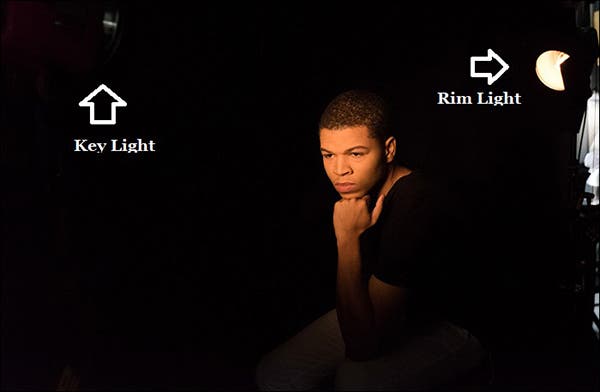
One of my low-key light setups.
Image courtesy of Yann Bizeul
Modifiers for Low Key Lighting
What type of modifiers work well for low-key lighting? Since you want light to hit only a certain area of your subject and not let light spill all over the place, a modifier with controlled directionality is generally needed for either your front light, your back light or both light sources depending on the result you are going for. When shooting a portrait, especially that of a woman where low-key lighting may not be the most flattering, I generally like to use a softbox or beauty dish with a sock positioned close to the face for the front of my subject to soften the light, thereby filling in light in shadow areas instead of showing every flaw. For the rim light, I would use a beauty dish with a grid, or a snoot (with a grid), depending on what modifiers I have on hand. The grid or snoot placed directly behind your subject and inline with the softbox in front – aids in controlling light spill and to keep light flowing in one direction with virtually no spill.
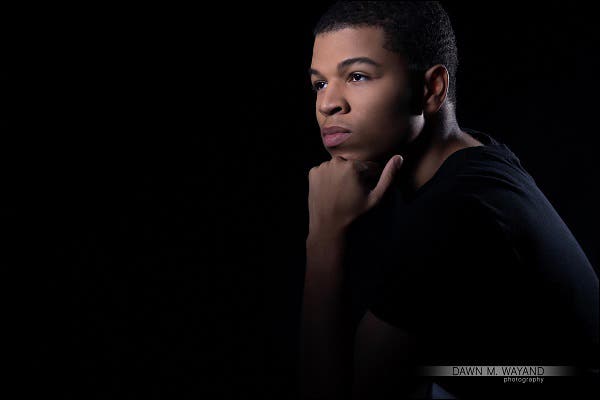
Result image of my model Baron based on the low-key setup above.
How To Capture a Low Key Image
For the example image of my model Celeste below, I used a softbox for the frontal lighting at a 45 degree angle from where I was standing with the camera and I used a beauty dish with a grid behind her as a rim light. I had Celeste standing in front of black background paper to make it easier for me to achieve the darker background needed for the low-key image. If using anything other than a grid, you may also need a black flag positioned to the side of your subject where the rim light is located to control light spill from hitting your camera.
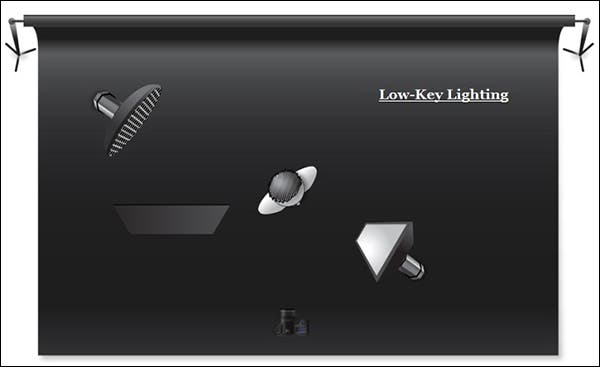
A softbox almost face on with a subject and a grid light source behind to create a rim light.
While there are a few different variations to create a low key lighting setup too, the setup above is the setup used to obtain the resulting image below.
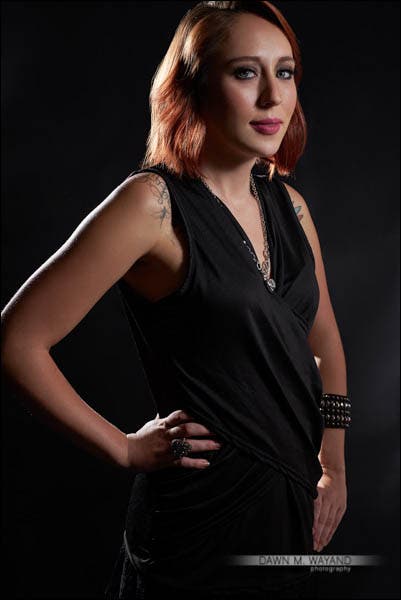
Final cut for Celeste using Low Key lighting.
When to Use High Key Lighting vs Low Key Lighting
Choosing to use high key lighting vs low key lighting comes down to what mood you want for your images. Are you looking for a moody, film noir-style portrait? Low key lighting is the best direction for a darker mood like that. Are you seeking a bright, highlight-heavy, and energetic feel? High key lighting will get you there.
Here are some of the most common scenarios for each type of lighting:
Portrait Photography
High Key Lighting: Bright, energetic images. Every detail is visible on the subject’s face and body. This is a common choice for headshots, some fashion photography, and family portraits. The goal is beautification rather than mood.
Low Key Lighting: Shadowy, more mysterious images. Subjects are selectively lit to draw focus to specific elements within the frame. Form, texture, shape, and expression are more important than being able to see every detail of the subject.
Product Photography
High Key Lighting: Saturated, eye-catching images where the subject can really stand out from the background. The focus is on packaging, color, and details. High key lighting allows the maximum visual information about a product.
Low Key Lighting: Images are more based on mood and telling a story than on being able to see a full label. Low key lighting works well for products that engender an air of mystery.
Landscape Photography
High Key Lighting: Bright, evenly lit scenes. This type of photography is best performed on a day with clear weather, sunshine, or even cloud cover without any rain.
Low Key Lighting: Blue hour, stormy days, and fog create the perfect atmosphere for low key landscapes.
Street Photography
High Key Lighting: Best used for images that focus on color, negative space, and unique environments. These images will be more energetic.
Low Key Lighting: Best used for grittier, more mysterious images with hard shadows, unique atmospheric elements, and a greater sense of mood. Black and white street photography works particularly well with this style.
Conclusion
Lighting doesn’t have to be a stressful tool to use when composing images. When it comes down to it, there are a plethora of ways to light an image. I hope that you’ll incorporate – or at least try – these and other lighting techniques to see what amazing results you can create.
